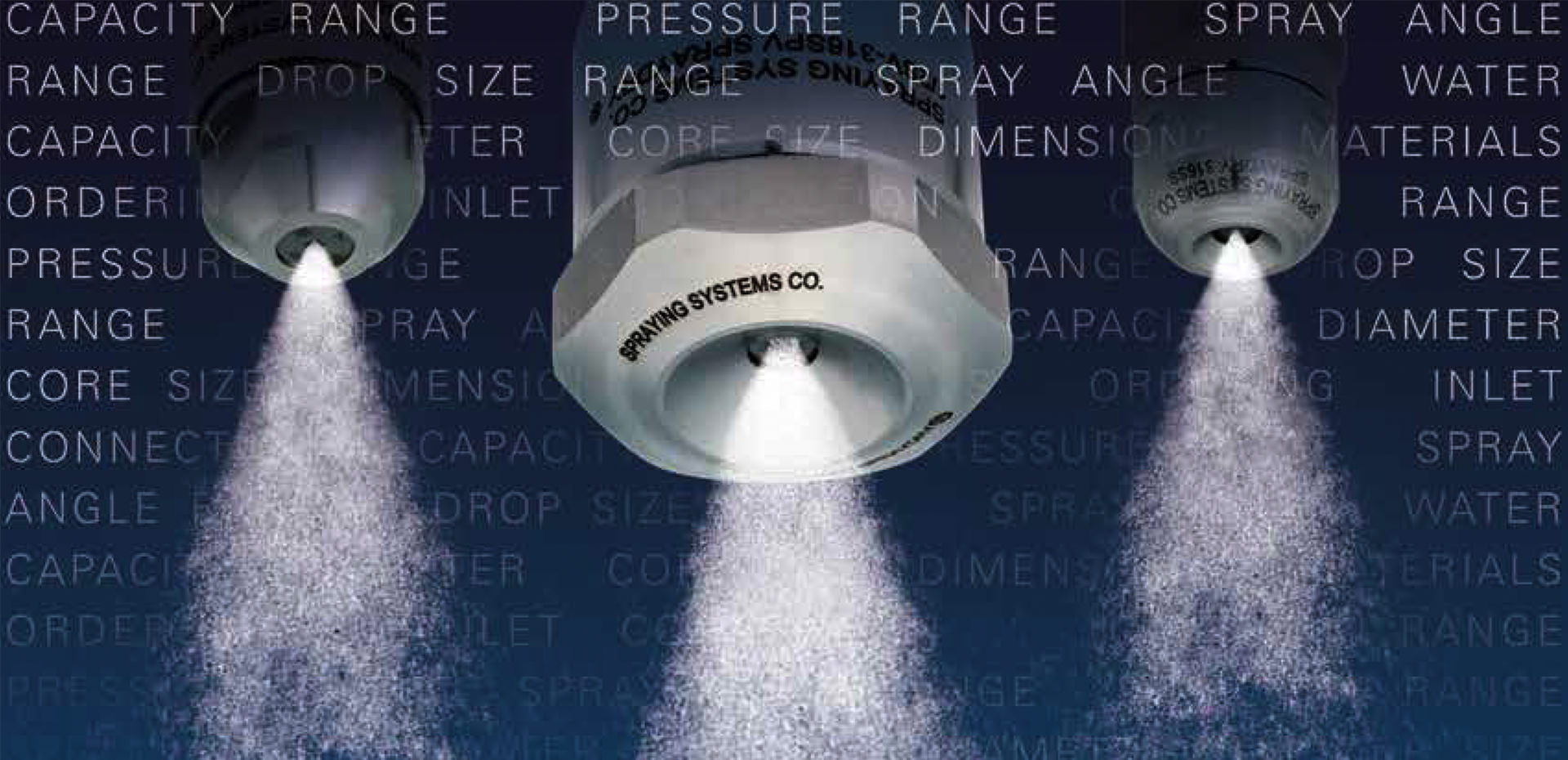Understanding Spray Dry Nozzles
Research Study
We performed this study to better understand the upstream flow and downstream spray characteristics of our spray dry nozzles.
We performed this study to better understand the upstream flow and downstream spray characteristics of our spray dry nozzles.
We conducted this research study to investigate the effects of fluid viscosity on the drop size distributions and velocity characteristics of various Spraying Systems Co. spray dry nozzles. We conducted experimental testing in conjunction with modeling simulations to provide in-depth insight into the nozzles' flow and spray characteristics. Our ultimate goal was to determine a system, whether computational or otherwise, to design and recommend certain spray dry nozzles over others depending on customer operating conditions.
Our method was to test three spray dry nozzle types: the swirlchamber, whirlchamber and slotted core nozzles. We were specifically interested in the effects of viscosity on drop size, velocity and spray concentration, so we tested a water/methylcellulose mixture at 1, 1000 and 5000 cP.
For the experimental testing, we used a Phase Doppler Interferometer instrument is used to acquire drop size, velocity, and concentration information, while the CFD team conducted the modeling simulation using the ANSYS Fluent package. The detailed test results across each spray plume provided insights on the spray characteristics over the range of operating conditions. The detailed computational models of the internal flow paths of each nozzle type revealed upstream velocity characteristics which are responsible for generating the downstream spray characteristics.
We found that the nozzle type does not have a strong influence on the resulting drop size characteristics for these sprays; it is expected that this finding only applies to these particular combinations of nozzle type, operating pressure, and material viscosity as previous testing has demonstrated multiple characteristic changes when comparing these nozzles. In contract to eh drop size results, the spray velocity results demonstrated significant difference, which are examined and explained through flow modeling inside each nozzles. The computational modeling provides insight into the upstream flow conditions that lead to the resulting spray characteristic of each nozzle.
Future work will include experiments with a Newtonian fluid and modeling with non-Newtonian solvers. It is expected that the results of the present study are limited in that the experiments use material that may have been shear-thinning at high flow velocities inside the nozzles. Additionally, the CFD models included only Newtonian capabilities. Ultimately, we believe such steps will help us develop a system for designing and recommending spray dry nozzles and systems.
